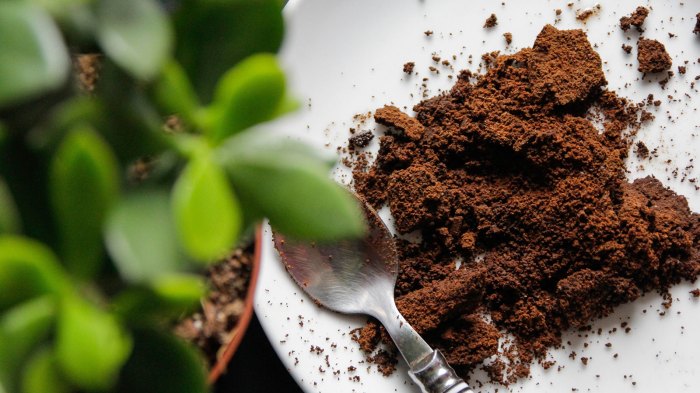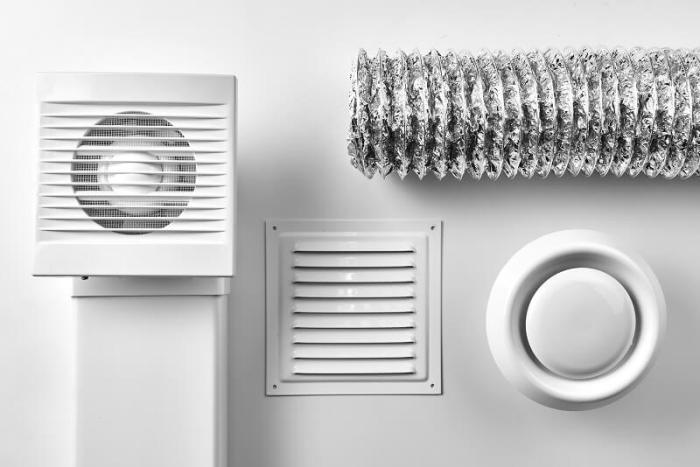
How long your homes systems and appliances last – How long your home systems and appliances last is a crucial question for any homeowner. From the sturdy plumbing to the reliable refrigerator, understanding the lifespan of your home’s components allows you to budget effectively and avoid costly repairs. This comprehensive guide delves into the lifespan of various home systems and appliances, examining factors like maintenance, quality, and usage patterns.
This article explores the typical lifespans of common home systems, including plumbing, electrical, and HVAC systems. We’ll also examine the durability of major appliances like refrigerators, ovens, and washing machines. Beyond the basics, we’ll discuss the impact of factors like climate, maintenance, and energy efficiency on the longevity of your home’s infrastructure.
Home Systems Lifespan Overview

Your home is a complex system of interconnected parts, each with a specific lifespan. Understanding these lifespans allows you to plan for necessary replacements and maintenance, preventing costly emergencies and ensuring your home’s longevity and comfort. From the plumbing pipes to the electrical wiring, each system has its own unique requirements.Knowing the expected life of your home systems lets you budget for future repairs and upgrades, preventing unexpected and potentially significant expenses.
Proper maintenance can extend the lifespan of these systems, reducing the risk of costly breakdowns and ensuring a comfortable and safe living environment.
Typical Lifespan of Home Systems
Home systems, like plumbing, electrical, and HVAC, have varying lifespans. Factors such as quality of materials, installation standards, maintenance routines, and usage patterns all influence the longevity of these components.
| System Type | Typical Lifespan | Key Maintenance Factors |
|---|---|---|
| Plumbing (pipes, fixtures) | 25-50 years (depending on material and usage) | Regular inspections, water quality checks, addressing leaks promptly, avoiding corrosion. |
| Electrical Wiring | 25-40 years (with proper maintenance) | Regular inspections for damage, proper grounding, addressing faulty wiring immediately. |
| HVAC (heating and cooling) | 10-15 years (for units, ductwork can last longer) | Regular filter changes, tune-ups, proper insulation, checking for leaks. |
| Roofing | 20-30 years (depending on material and maintenance) | Regular inspections, addressing leaks, proper ventilation, protecting from extreme weather. |
| Foundation | 50-100+ years (with proper maintenance and care) | Regular inspections for cracks, addressing moisture issues, preventing structural damage. |
| Water Heater | 8-12 years (with proper maintenance) | Regular maintenance checks, avoiding scale buildup, proper water temperature settings. |
Factors Influencing System Longevity
Numerous factors contribute to the lifespan of home systems. The quality of materials used in construction directly impacts durability. Regular maintenance significantly extends the lifespan of systems. Proper installation and usage habits also play a vital role.
Wondering how long your home’s systems and appliances last? It’s a common question, and the answer depends on many factors. But while you’re planning for those replacements, why not get inspired by some delicious summer recipes? Check out these 18 avocado recipes get you ready for summer – they’re sure to be a hit, and might even help you decide how to use up all those ripe avocados before they go bad! Ultimately, knowing how long things last is crucial for responsible homeownership.
- Material Quality: High-quality materials are more resistant to wear and tear, extending the lifespan of the system. For example, copper plumbing is known for its durability and resistance to corrosion, potentially lasting much longer than less robust materials.
- Maintenance Practices: Consistent maintenance, such as regular inspections, tune-ups, and cleaning, greatly extends the life of your home systems. Ignoring routine maintenance can lead to premature failures and costly repairs.
- Usage Patterns: Heavy usage, like running a dishwasher multiple times a day or using a high-output water heater, can accelerate wear and tear, shortening the system’s lifespan. Balancing usage with proper maintenance is crucial.
Examples of System Lifespan
A well-maintained copper plumbing system can last for 50 years or more, whereas a poorly maintained system with inadequate maintenance could face issues within 25 years. Similarly, regular HVAC maintenance can keep a system functioning optimally for 15 years or more, whereas neglect could lead to a need for replacement in 10 years.
Appliance Durability
Appliances are essential components of modern homes, and their lifespan significantly impacts household budgets and environmental sustainability. Understanding how long appliances typically last and the factors affecting their durability is crucial for informed purchasing decisions and responsible disposal. Knowing the expected lifespan helps homeowners plan for potential replacements and anticipate repair costs.Appliance longevity is not solely determined by manufacturing quality; usage patterns and the environment also play a pivotal role.
Different models and brands exhibit varying levels of durability, influenced by design, materials, and manufacturing processes. This section delves into the typical lifespans of major appliances, explores the impact of usage patterns, and examines the differences in durability among various brands.
Wondering how long your home’s HVAC system or refrigerator will hold up? It’s a good idea to plan for replacements, just like you’d plan for a relationship! Knowing things like the average lifespan of your appliances helps you budget better. For example, understanding 11 good things to know before you date a straightforward woman here can help you navigate potential compatibility issues, and the same applies to your home’s systems.
Ultimately, understanding the lifespan of your home systems and appliances will save you a headache and money in the long run.
Typical Lifespan of Major Appliances
Major appliances like refrigerators, ovens, dishwashers, washing machines, and dryers are vital household components. Their lifespan significantly affects home maintenance costs and environmental impact. Understanding the average lifespan of these appliances allows homeowners to budget for replacements and make informed choices about purchasing new models.
Influence of Usage Patterns on Appliance Longevity
The frequency and intensity of use directly correlate with the lifespan of appliances. Heavy usage, such as daily or multiple daily cycles for dishwashers and washing machines, or frequent use of high-temperature settings in ovens, can accelerate wear and tear. Conversely, regular maintenance and careful operation can significantly extend the lifespan of appliances. Factors such as proper loading of washing machines, balanced loads in dryers, and appropriate water temperature settings in dishwashers all contribute to appliance longevity.
Brand and Model Durability Comparison
Appliance durability varies significantly across different brands and models. Factors such as design, materials, manufacturing processes, and warranties all contribute to these differences. While some brands consistently achieve higher ratings for durability, the specific model’s design can also impact its longevity. A detailed comparison is presented below.
Home systems and appliances can last a surprisingly long time, but their lifespan depends on a lot of factors. Just like finding a great mentor isn’t always easy – good mentors are hard to find, and knowing what to look for is key – proper maintenance and care are crucial for extending their life. Ultimately, understanding the typical lifespan of different systems helps you budget for replacements and plan for future needs.
| Appliance Type | Brand | Typical Lifespan (Years) | Potential Lifespan-Extending Factors |
|---|---|---|---|
| Refrigerator | XYZ | 10-15 | Regular defrosting, maintaining proper temperature, avoiding overcrowding |
| Refrigerator | ABC | 8-12 | Proper ventilation, minimizing door openings, using energy-efficient settings |
| Oven | DEF | 10-15 | Regular cleaning, using appropriate settings for different cooking needs, preventing overheating |
| Oven | GHI | 8-12 | Using the oven frequently for baking, ensuring proper ventilation, regular cleaning |
| Dishwasher | JKL | 8-12 | Proper loading, avoiding excessive use of harsh detergents, running the dishwasher regularly |
| Dishwasher | MNO | 10-15 | Regular cleaning of filters, ensuring proper water pressure, using energy-efficient settings |
| Washing Machine | PQR | 8-12 | Using appropriate detergents, ensuring balanced loads, maintaining proper water levels |
| Washing Machine | STU | 10-15 | Regular cleaning of filters, using energy-efficient settings, proper maintenance of hoses |
| Dryer | VWX | 8-12 | Regular cleaning of lint trap, ensuring balanced loads, preventing overheating |
| Dryer | YZ | 10-15 | Regular maintenance of the heating element, ensuring proper ventilation, avoiding overloading |
Factors Affecting Lifespan

Understanding the lifespan of your home systems and appliances goes beyond simply knowing their typical operational duration. Numerous external and internal factors play a significant role in determining how long they function optimally. These factors, from the quality of installation to the frequency of use, can significantly impact the overall lifespan of your equipment. A deeper understanding of these influences empowers homeowners to make informed decisions about maintenance, repairs, and replacements, ensuring optimal performance and longevity.Various factors contribute to the longevity of home systems and appliances.
Climate conditions, water quality, and the frequency of use all impact how long specific items remain functional. Moreover, the quality of installation during the initial setup can have a considerable effect on the long-term performance and lifespan of a system or appliance. Regular maintenance and prompt repairs are also crucial for extending the operational life of home equipment.
Climate Impacts
Climate conditions significantly influence the lifespan of many home systems. Extreme temperatures, particularly fluctuating conditions, can stress components and accelerate deterioration. High humidity can lead to corrosion in electrical systems and appliances. Similarly, prolonged periods of drought can impact water heater performance and increase the risk of leaks in plumbing systems. Areas with harsh winters may experience more frequent breakdowns in HVAC systems due to extreme cold.
The frequency and severity of storms also contribute to the wear and tear on roofing systems and exterior components.
Water Quality and Its Effect
Water quality directly impacts the lifespan of appliances like dishwashers, washing machines, and water heaters. Hard water, containing high mineral content, can cause scaling and build-up in appliances, reducing their efficiency and lifespan. This scaling can damage heating elements, valves, and other internal components, eventually leading to breakdowns. Conversely, corrosive water can cause premature rusting and corrosion in pipes and plumbing fixtures.
Frequency of Use and Its Impact
The frequency with which a home system or appliance is used significantly affects its lifespan. High-use appliances like dishwashers, washing machines, and ovens experience greater wear and tear compared to those used less frequently. Proper maintenance, including regular cleaning and checks, is critical to extending the lifespan of high-use appliances. Conversely, infrequent use can lead to issues like dust accumulation, corrosion, or malfunctions due to lack of proper lubrication and movement.
Quality of Installation and Its Importance
The quality of initial installation plays a crucial role in the long-term performance of home systems and appliances. A poorly installed system or appliance may have a shorter lifespan due to improper connections, faulty seals, or inadequate support structures. This may result in premature wear, leaks, or breakdowns. A professional and thorough installation minimizes these issues and contributes to a longer operational lifespan.
Properly installed systems and appliances are more efficient and less prone to damage.
Regular Maintenance and Repairs
Regular maintenance and prompt repairs are essential for extending the lifespan of home systems and appliances. Preventive maintenance tasks, like cleaning filters, lubricating moving parts, and checking connections, can prevent small problems from escalating into major malfunctions. Prompt repair of minor issues prevents them from causing more significant damage and costly replacements in the future. A proactive approach to maintenance and repair minimizes the risk of premature equipment failure.
Impact of Maintenance Practices on Appliance Lifespan
| Maintenance Practice | Potential Positive Effect | Potential Negative Effect |
|---|---|---|
| Regular cleaning of filters (e.g., HVAC filters) | Improved air quality, enhanced efficiency, reduced strain on components | None, if performed correctly |
| Regular lubrication of moving parts | Reduced friction, extended lifespan of moving parts, reduced wear and tear | Potential for spills if not handled correctly, if wrong type of lubricant is used |
| Checking and tightening connections | Prevents leaks, avoids electrical hazards, reduces risk of malfunctions | Potential for accidental damage if not handled carefully |
| Prompt repair of minor issues | Avoids escalation of problems, prevents costly replacements, maintains optimal performance | Potential for cost associated with the repair |
Energy Efficiency and Lifespan
Energy efficiency plays a crucial role in the longevity of your home systems and appliances. Choosing energy-efficient models often translates to reduced wear and tear on internal components, leading to a longer operational life. This isn’t just about saving money on energy bills; it’s about maximizing the return on your investment by extending the lifespan of your appliances.Energy-efficient appliances are designed with advanced technologies and materials that minimize energy consumption.
This lower energy demand translates to reduced strain on motors, compressors, and other critical parts. Less stress on these components means fewer breakdowns and replacements, ultimately extending the overall lifespan of the appliance. For example, refrigerators with improved insulation and compressors consume less energy, leading to a longer lifespan compared to less energy-efficient models.
Correlation Between Energy Efficiency and Lifespan
Energy efficiency and lifespan are directly correlated. Energy-efficient appliances, by design, require less energy to operate. This reduced energy consumption directly translates to less stress on the appliance’s internal components. This reduced stress often results in fewer breakdowns and a longer operational life. A good example of this is in air conditioners; more efficient models are built to maintain optimal temperatures with less strain on the compressor, extending its operational life and reducing the need for premature replacements.
Energy Efficiency Ratings and Lifespan Estimates
Understanding the energy efficiency ratings of appliances can help you anticipate their potential lifespan. A higher energy efficiency rating generally indicates a longer lifespan. This is due to the reduced stress on internal components, resulting in fewer breakdowns.
| Model | Energy Efficiency Rating | Estimated Lifespan (Years) |
|---|---|---|
| Whirlpool WRT520SZWM Refrigerator | ★★★★★ (Very Efficient) | 15-20 |
| GE GSE22ESFSES Electric Range | ★★★★ (Efficient) | 12-15 |
| LG LTWM20166T Air Conditioner | ★★★★★ (Very Efficient) | 10-15 |
| Samsung NE63A7611SS Dishwasher | ★★★★ (Efficient) | 10-12 |
| LG WM3400CW Washer | ★★★ (Moderately Efficient) | 8-10 |
Note: These are estimates and actual lifespans may vary depending on usage patterns, maintenance, and other factors. It is important to consider other contributing factors like proper maintenance and usage habits when predicting the appliance’s longevity.
Preventive Maintenance Strategies: How Long Your Homes Systems And Appliances Last
Taking proactive steps to maintain your home systems and appliances is crucial for extending their lifespan and ensuring smooth operation. Regular preventive maintenance not only prolongs the useful life of your equipment but also minimizes costly repairs and unexpected breakdowns. This proactive approach translates to significant savings over the long term.Preventive maintenance isn’t just about extending the life of your appliances; it’s about ensuring they perform at their best and efficiently use energy.
By understanding the specific needs of each system and performing regular checks, you can catch potential problems early, saving you money and headaches down the road.
Regular Inspections and Tune-ups
Regular inspections and tune-ups are vital for maintaining optimal performance and extending the lifespan of your home systems. This proactive approach allows you to identify potential issues before they escalate into major problems. By addressing small issues promptly, you can prevent more significant and costly repairs in the future. For example, a simple filter replacement in your HVAC system can prevent costly repairs and improve energy efficiency.
Specific Maintenance Steps for Various Home Systems, How long your homes systems and appliances last
Proper maintenance procedures for each system are essential for its longevity and efficient operation. Following these steps can help avoid premature wear and tear and maintain optimal performance.
- HVAC System: Regular filter changes (monthly or as needed), cleaning of vents and air ducts, and checking for refrigerant leaks are critical. A professional tune-up at least once a year is recommended to ensure optimal airflow and energy efficiency. Improper maintenance can lead to higher energy bills and reduced system lifespan.
- Plumbing System: Inspecting pipes for leaks, ensuring proper drainage, and flushing the system periodically can prevent clogs and corrosion. Regular checks of water pressure and temperature are important for maintaining system integrity. Ignoring leaks can lead to costly water damage and system failure.
- Electrical System: Inspecting wiring, outlets, and switches for damage or wear is crucial. Overloaded circuits can cause overheating and potential fire hazards. Regular testing of circuit breakers and fuses is important. Neglecting electrical maintenance can lead to fire hazards and unexpected system failures.
- Appliances: Regular cleaning and maintenance of appliances such as refrigerators, ovens, dishwashers, and washing machines can prevent breakdowns and extend their lifespan. Following manufacturer recommendations for cleaning and maintenance is crucial. Ignoring appliance maintenance can lead to reduced efficiency and shortened lifespan.
- Roofing System: Regular inspections for damage, such as leaks, cracks, or missing shingles, are essential. Addressing these issues promptly can prevent water damage and structural problems. Ignoring roof maintenance can lead to significant structural damage and costly repairs.
Importance of Following Manufacturer Recommendations
Adhering to manufacturer recommendations for maintenance procedures is crucial for optimal performance and extended lifespan of your home systems and appliances. Manufacturers provide specific guidelines tailored to their products, ensuring optimal functionality and longevity. These recommendations are based on years of research and testing, providing valuable insight into the best practices for maintaining your equipment. For example, a washing machine’s manual may recommend a specific detergent type and a particular cleaning schedule to prevent damage and maintain optimal cleaning performance.
Identifying Early Warning Signs of System Issues
Knowing your home systems and appliances are operating as expected is crucial for avoiding costly repairs and ensuring comfort. Failing to address early warning signs can lead to more extensive and expensive problems down the road. This proactive approach allows for timely intervention, potentially preventing significant malfunctions and extending the lifespan of your home’s infrastructure.Early detection of potential issues can save you money and frustration.
By understanding the subtle signals that your systems emit, you can address problems before they escalate into major repairs. A proactive approach to home maintenance, focusing on recognizing these early warning signs, can save you significant headaches and expenses in the long run.
Common Indicators of Impending Problems
Early warning signs often manifest as subtle changes in the operation of your home systems. These signals, if recognized and addressed promptly, can prevent more significant and costly issues from developing. Understanding these indicators is key to maintaining your home’s systems in optimal condition.
Table of Common Problems, Early Warning Signs, and Recommended Actions
| Problem | Warning Signs | Recommended Actions |
|---|---|---|
| HVAC System Malfunction | Unusual noises (e.g., grinding, screeching), inconsistent temperature, reduced airflow, or high energy bills. | Check for loose components, inspect air filters, and schedule a professional HVAC technician inspection. |
| Electrical System Issues | Flickering lights, frequent circuit breaker trips, unusual smells (e.g., burning), or overloaded outlets. | Check for loose wires, identify and replace any damaged outlets or cords, and call a licensed electrician for a full system inspection. |
| Plumbing Leaks | Dripping sounds, water stains on ceilings or walls, high water bills, or unusual dampness. | Check for leaks in pipes and fixtures, address any dripping immediately, and consult a plumber for any significant issues. |
| Water Heater Problems | Reduced hot water pressure, inconsistent water temperature, or unusual noises (e.g., rumbling, clicking). | Inspect the anode rod, check the thermostat settings, and consider a professional inspection if problems persist. |
| Refrigerator Malfunction | Food spoiling quickly, uneven temperature distribution within the refrigerator, or unusual noises (e.g., humming, clicking). | Check the temperature settings, ensure proper air circulation, and consult a repair professional if the issue is beyond simple troubleshooting. |
| Appliance Malfunction (General) | Unusual noises, reduced performance, overheating, or unusual odors. | Consult the appliance manual for troubleshooting steps, replace parts as needed, and call a repair professional if the issue persists. |
Cost of Replacement vs. Repair
Weighing the financial implications of repairs versus replacements is crucial for maintaining a healthy home budget. Sometimes, a seemingly minor issue can escalate quickly, leading to substantial costs if ignored. Understanding the potential expense of both options empowers homeowners to make informed decisions that align with their financial goals and the long-term health of their property.
Financial Implications of Repair vs. Replacement
Home systems and appliances, like any machinery, require upkeep and can develop issues over time. The decision to repair or replace often hinges on the severity of the problem and the overall condition of the system. A minor repair might be a more affordable solution in the short term, but a significant repair or a series of frequent repairs could ultimately lead to a higher overall cost than a replacement.
Replacement costs, while potentially higher upfront, can save money in the long run if the replaced item has a longer lifespan and lower maintenance requirements.
Comparison of Repair and Replacement Costs
The cost of repair versus replacement varies significantly depending on the specific system or appliance. Factors like the age, brand, and complexity of the item all play a role in determining the cost. Predicting the long-term costs requires careful evaluation of both options, considering both immediate and potential future expenses.
Cost Breakdown for Common Home Systems and Appliances
A comparative analysis of repair and replacement costs for common home systems and appliances provides valuable insights. This table estimates costs, recognizing that actual expenses can vary based on specific situations and local factors.
| System/Appliance | Estimated Repair Cost | Estimated Replacement Cost |
|---|---|---|
| Refrigerator | $100-$500 (for minor repairs) to $1000+ (for major repairs) | $800-$3000+ (depending on size and features) |
| Washing Machine | $50-$500 (for repairs like pump or motor) to $800+ (for extensive repairs) | $500-$1500+ (depending on size and features) |
| Dishwasher | $50-$400 (for repairs like pump or motor) to $800+ (for extensive repairs) | $400-$1200+ (depending on size and features) |
| HVAC System | $200-$1000 (for minor repairs) to $3000+ (for major repairs) | $3000-$10000+ (depending on size and type) |
| Water Heater | $100-$500 (for minor repairs) to $1000+ (for major repairs) | $500-$2000+ (depending on size and type) |
| Oven | $50-$500 (for repairs like heating element) to $800+ (for extensive repairs) | $500-$1500+ (depending on size and features) |
Understanding Warranties and Guarantees
Warranties and guarantees are crucial parts of owning home appliances and systems. They provide a safety net, outlining the manufacturer’s responsibility for repairs or replacements during a specific timeframe. Understanding these documents can significantly impact your repair costs and help you make informed decisions about maintenance and replacements. They often detail the conditions under which the manufacturer is obligated to cover repairs or replacements, so a thorough review is vital.Knowing what’s covered under warranty can prevent costly surprises down the road.
For instance, a faulty refrigerator compressor might be covered under warranty, but a damaged door due to misuse is likely excluded. Understanding these nuances can help you budget more effectively for potential repairs.
Role of Warranties in Determining Appliance Lifespan
Warranties, in a way, set a benchmark for expected appliance lifespan. A longer warranty period often suggests the manufacturer has confidence in the product’s durability and reliability. However, a warranty doesn’t guarantee the appliance will last that long; it merely indicates a period of time during which the manufacturer will cover repair or replacement for specific defects. For example, a 10-year warranty on a water heater suggests the manufacturer anticipates a reasonable lifespan of around a decade.
Ultimately, factors like usage, maintenance, and environmental conditions play a significant role in the actual lifespan.
How Warranties Impact Repair Costs
Warranties directly impact repair costs by providing a defined period within which repairs are covered. If a covered issue arises within the warranty period, the cost of the repair or replacement is often borne by the manufacturer. This significantly reduces the financial burden on the homeowner. Conversely, if the issue arises outside the warranty period, the cost of repair is typically the homeowner’s responsibility.
For instance, a washing machine needing a new motor after five years (outside the warranty period) will likely require a significant repair cost, while the same issue during the first two years (within the warranty) would likely be covered.
Importance of Reviewing Warranty Details Carefully
A thorough review of warranty details is crucial for understanding the extent of coverage. This involves scrutinizing the specific terms and conditions of the warranty, including the duration, exclusions, and procedures for filing a claim. This careful review can save significant expenses in the long run. Failing to fully understand the warranty can lead to unexpected costs if a seemingly covered issue is actually excluded.
Examples of exclusions might include damage from misuse, normal wear and tear beyond expected usage, or repairs needed due to improper installation.
Types of Warranties and Guarantees
Different appliances have different warranty structures, and a detailed overview can help consumers make informed choices.
| Appliance | Warranty Type | Coverage Period (Years) | Exclusions |
|---|---|---|---|
| Refrigerator | Manufacturer’s Standard Warranty | 1-5 | Damage from misuse, improper installation, or wear and tear beyond normal use. |
| Washing Machine | Manufacturer’s Standard Warranty | 1-5 | Damage from misuse, improper installation, or wear and tear beyond normal use. |
| Dishwasher | Manufacturer’s Standard Warranty | 1-5 | Damage from misuse, improper installation, or wear and tear beyond normal use. |
| Water Heater | Manufacturer’s Standard Warranty | 5-10 | Damage from misuse, improper installation, or wear and tear beyond normal use. |
| HVAC System | Manufacturer’s Standard Warranty | 5-10 | Damage from misuse, improper installation, or wear and tear beyond normal use, including parts like filters and vents that are not covered. |
Wrap-Up
In conclusion, knowing the lifespan of your home systems and appliances is essential for responsible homeownership. By understanding the factors influencing longevity and implementing preventive maintenance strategies, you can significantly extend the life of your investments. This knowledge empowers you to make informed decisions about repairs, replacements, and future upgrades, ultimately saving you money and ensuring your home remains a comfortable and functional space for years to come.





